What a relief! We are now out of the big cities and there is room to breathe out here on the Outer Banks of North Carolina. We are at a campground in Kill Devil Hills behind the Wright Brothers Memorial on a patch of land carved out of the marshes. In fact, the campground is on Marshy Road. The weird thing about this campground is that it is a loop with a historical cemetery in the middle of the loop. Just in time for Halloween. I thought this was an strange tombstone.
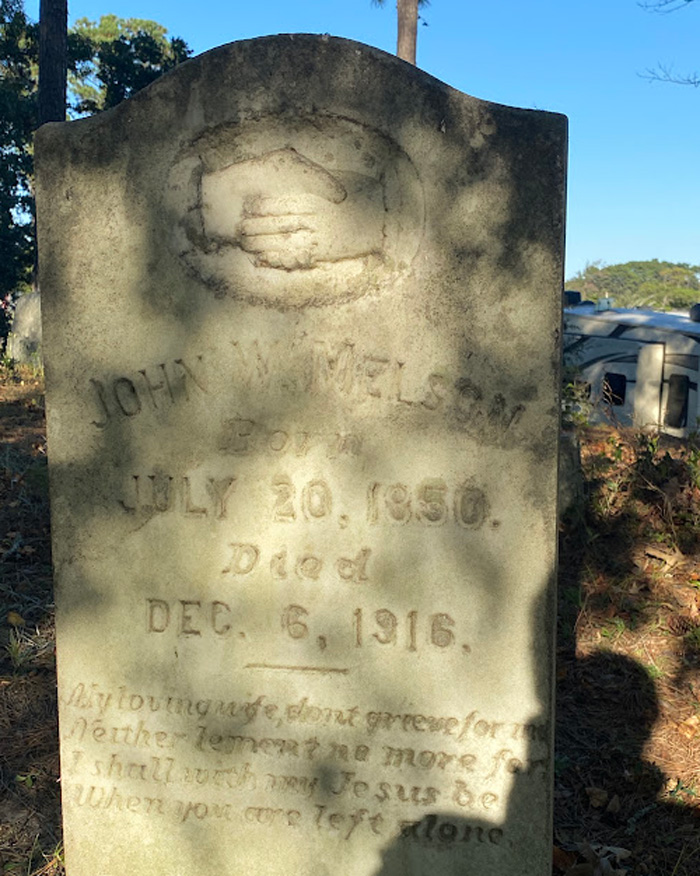
Our tour of the Outer Banks took us first to Bodie Lighthouse. The tour guide said an interesting photo could be taken in the shadow of the lighthouse with the sun lighting up the lens. What do you think?
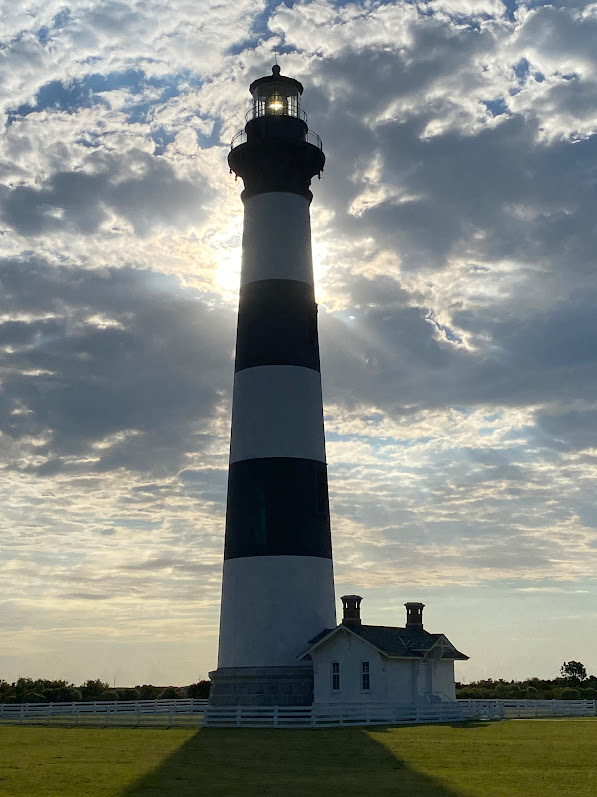
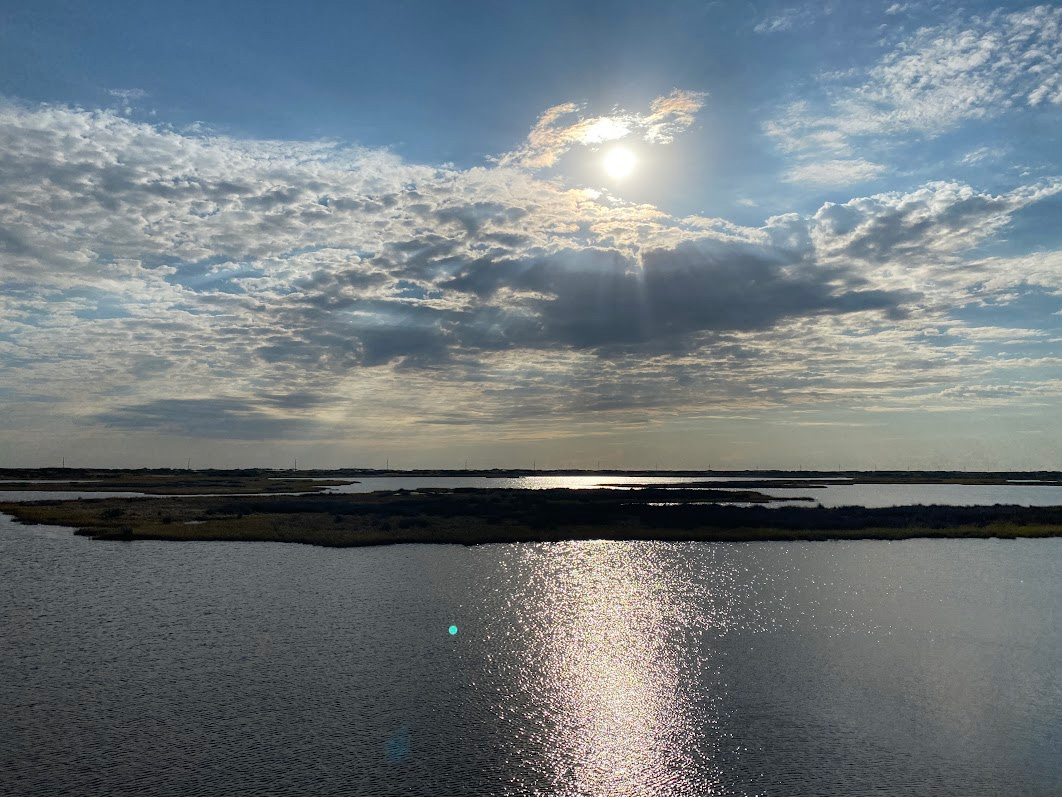
We stopped at the Wright Brothers National Memorial. I used to scoff, thinking the Wright brothers just glided that plane, but the record was for a heavier-than-air machine, lifting on its own power, moving forward without losing speed and landing on a spot at least the same height as it started. That was in 1903. In 1969, man lands on the moon. We’ve come a very long way in a very short time.
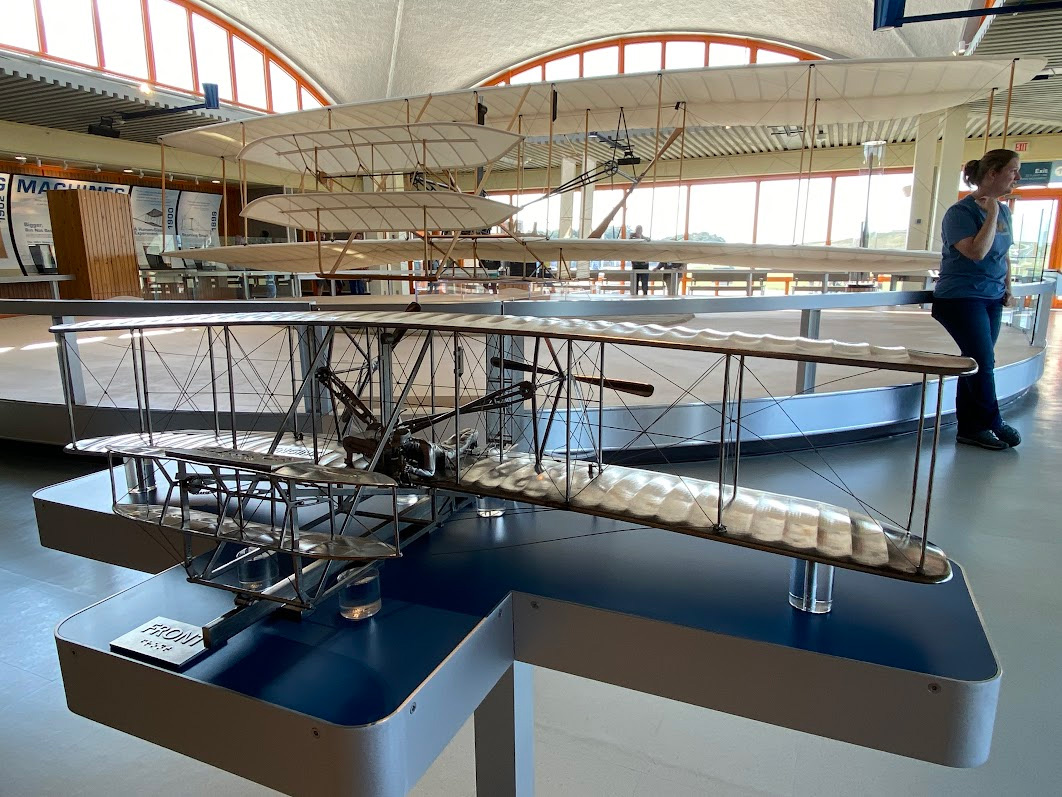
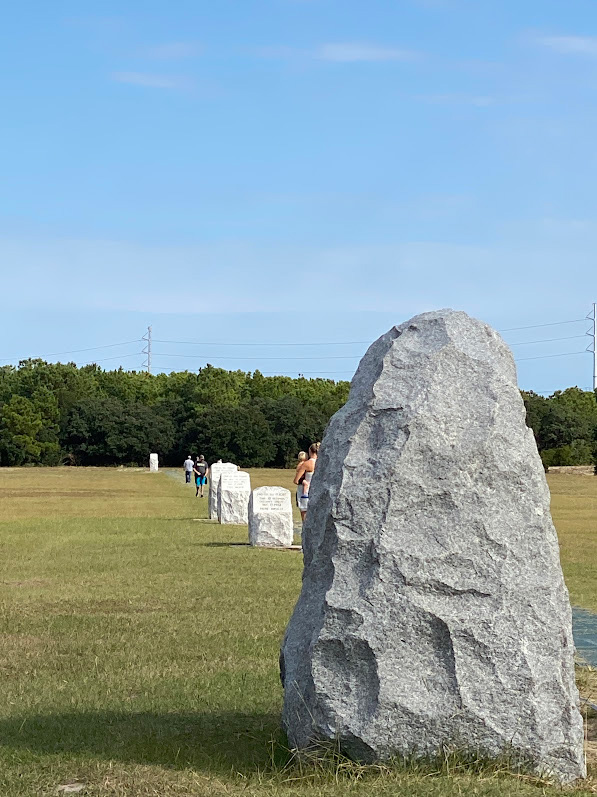
I’d add a photo of the Wright Brothers Memorial on top of Kill Devil Hill, but these memorials all look alike any more – a big monolith on a hill. The statues behind the monolith were more interesting.
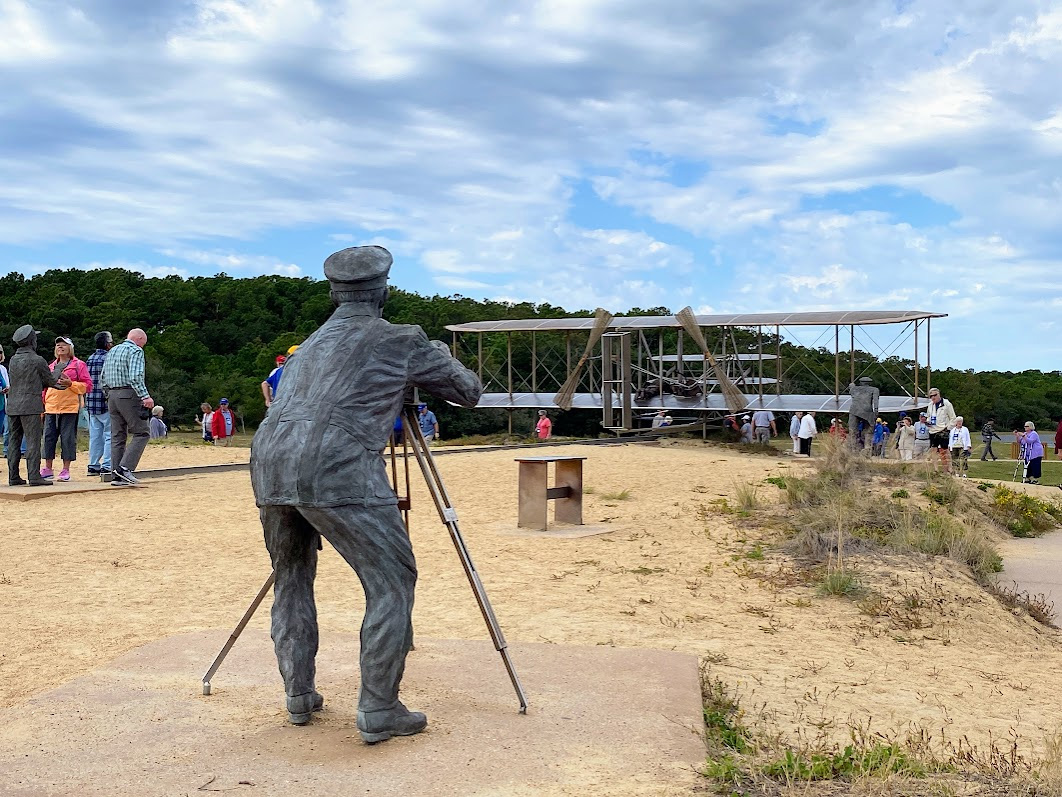
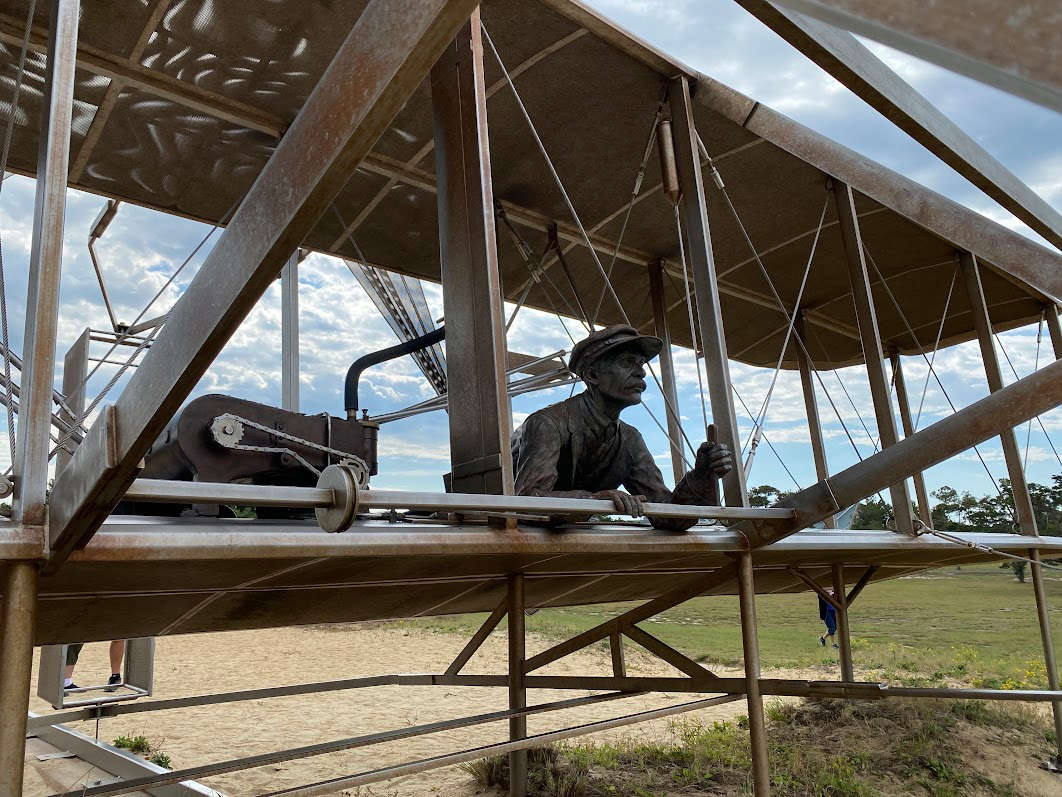
The next stop was Pea Island Wildlife Refuge. These outer banks are along the East Coast flyway and are a stopover point for many migratory birds. They have a series of 3 big, shallow ponds that the waterfowl feed on when migrating. When I looked out over the ponds, I didn’t think there were any birds there, but when I looked through the telescopes set up, it was covered with birds, all with their butts up feeding on the grass at the bottom.
At this point, there was also a shipwreck on the ocean side of the road. You are lucky when you can see a shipwreck on the Outer Banks because they come and go with the weather, wind and waves
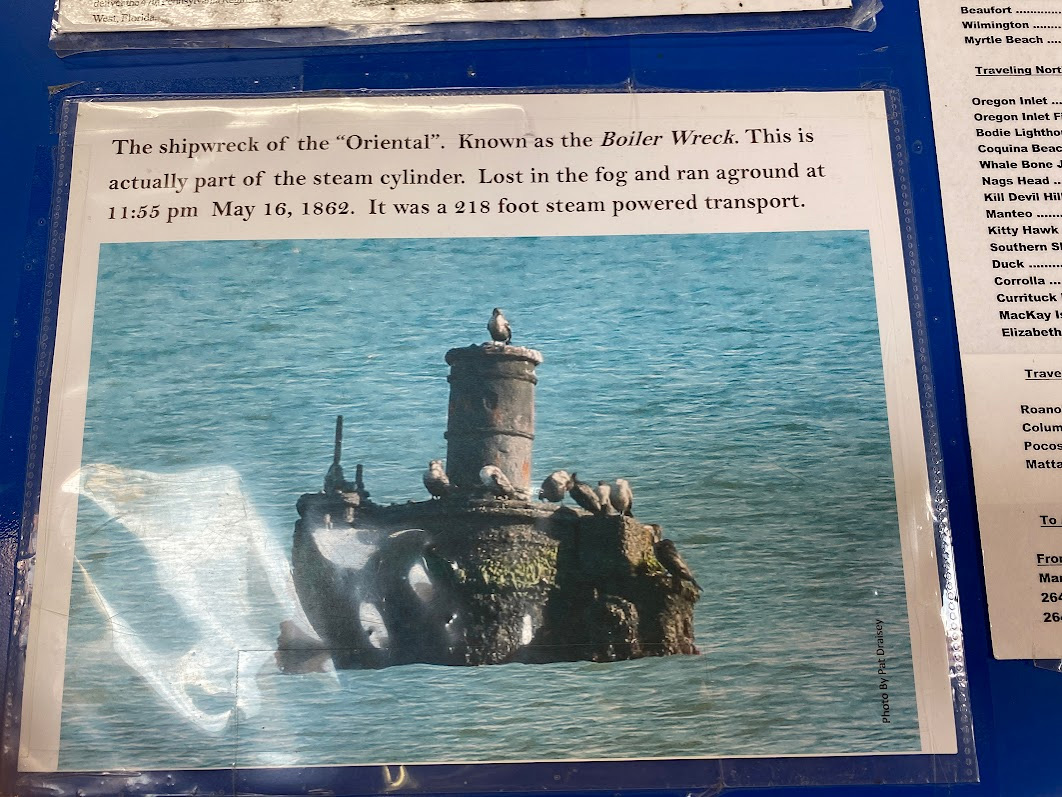
Our final stop of the day was the Chicamacomico Life-Saving Station. They have a restored 1874 station and a later 1911 station. The USLSS, which is the US Life-Saving Station is the precursor to the Coast Guard. We learned that the US attempted to save the people from shipwrecks, like Samaritans, whereas other countries at that time might just kill survivors or enslave them (like Japan?). It was interesting about how they started and the methods they developed that eventually evolved into our current Coast Guard.
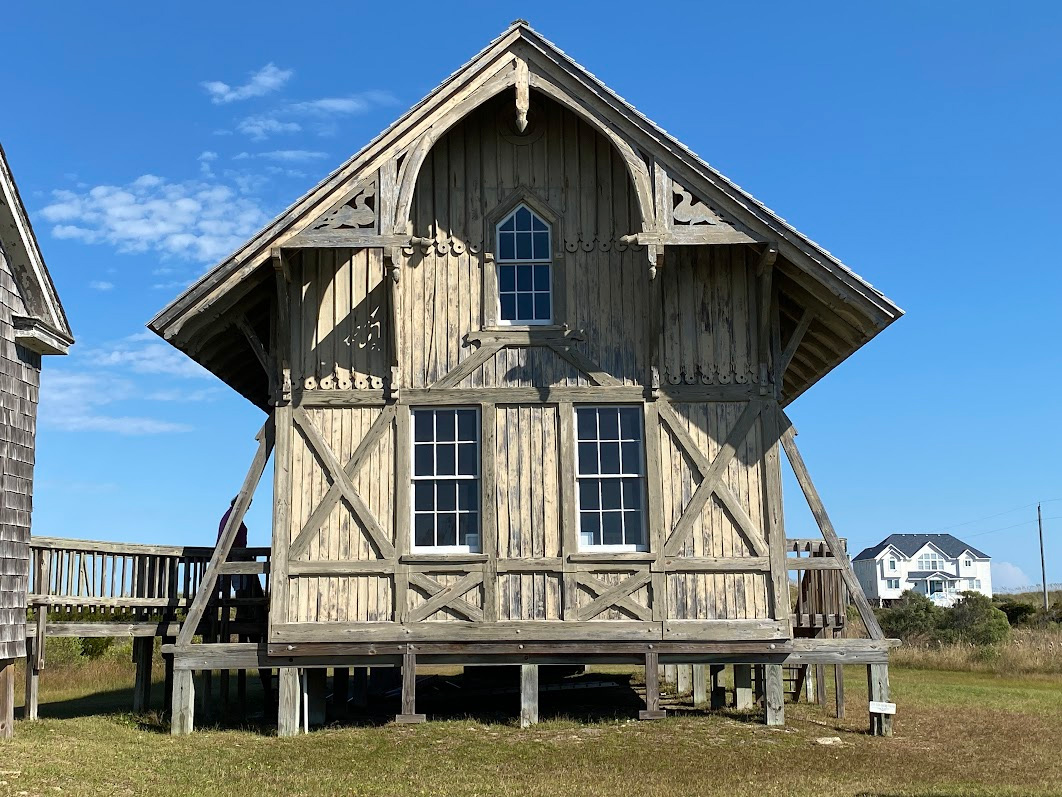
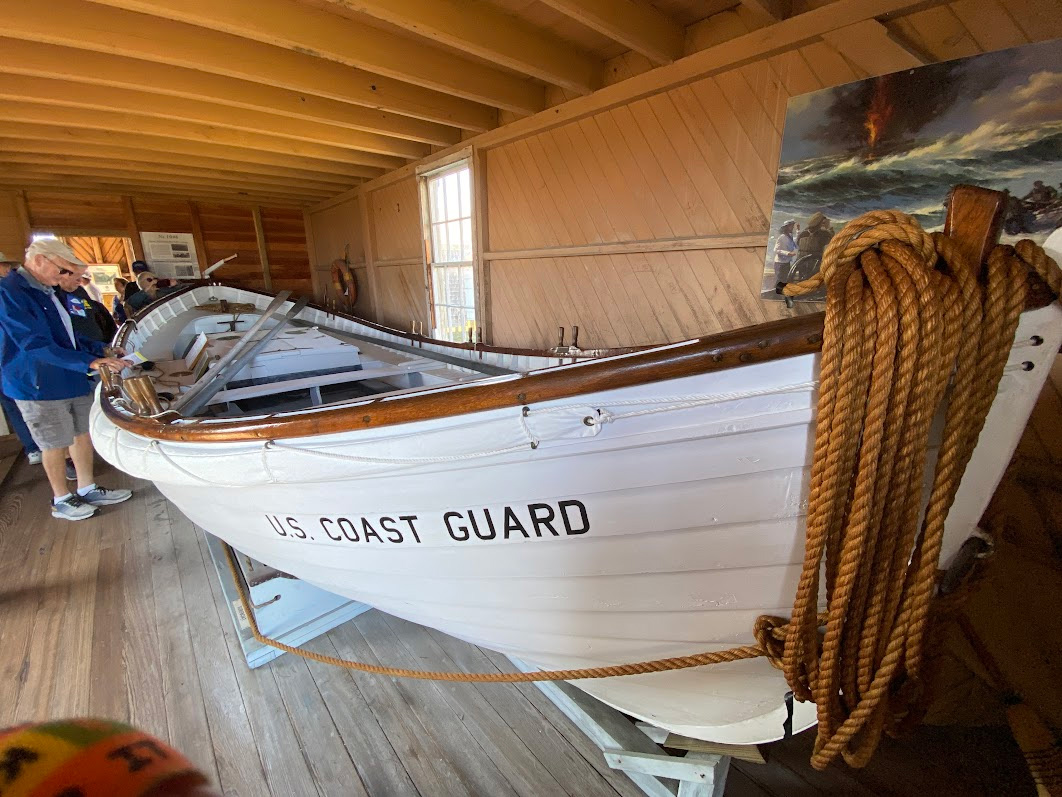
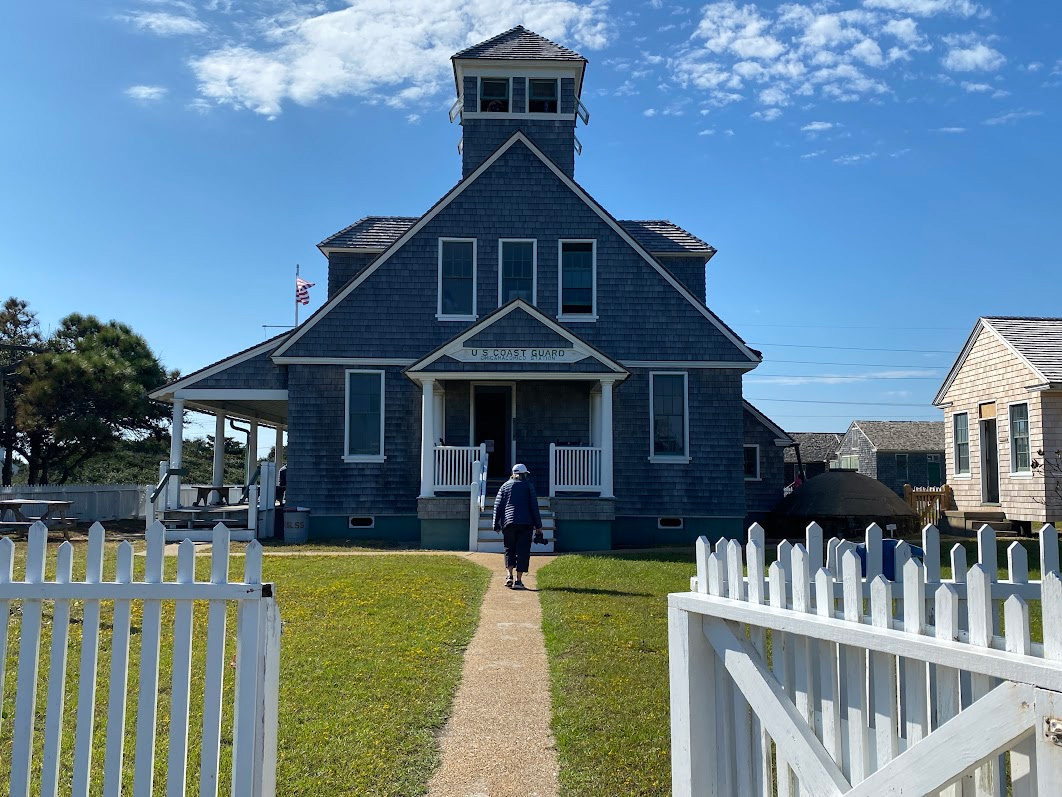

I’ve visited the Outer Banks countless times, and was glad to have this chance to see things and places I never stopped for in the past.
Oh, and I found another interesting sign. The tour guide said that they used to put “Please don’t walk on the grass” signs up only to have all the tourists ignore them. So they put this up instead and found it much more effective.
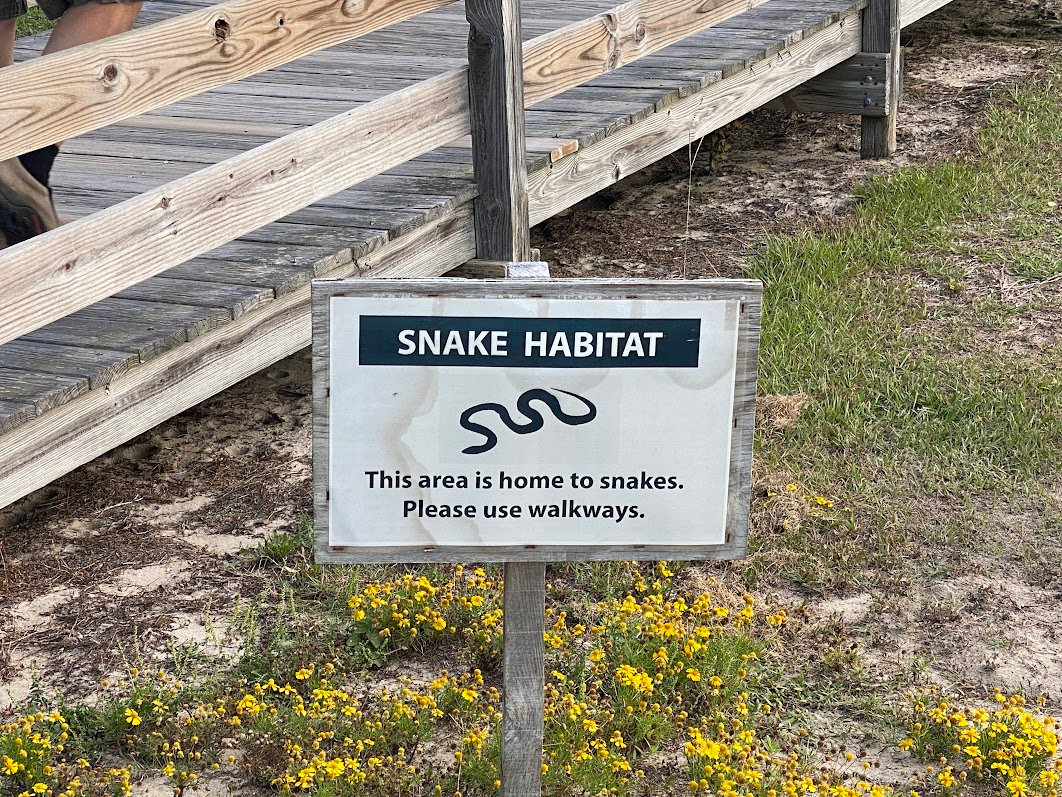
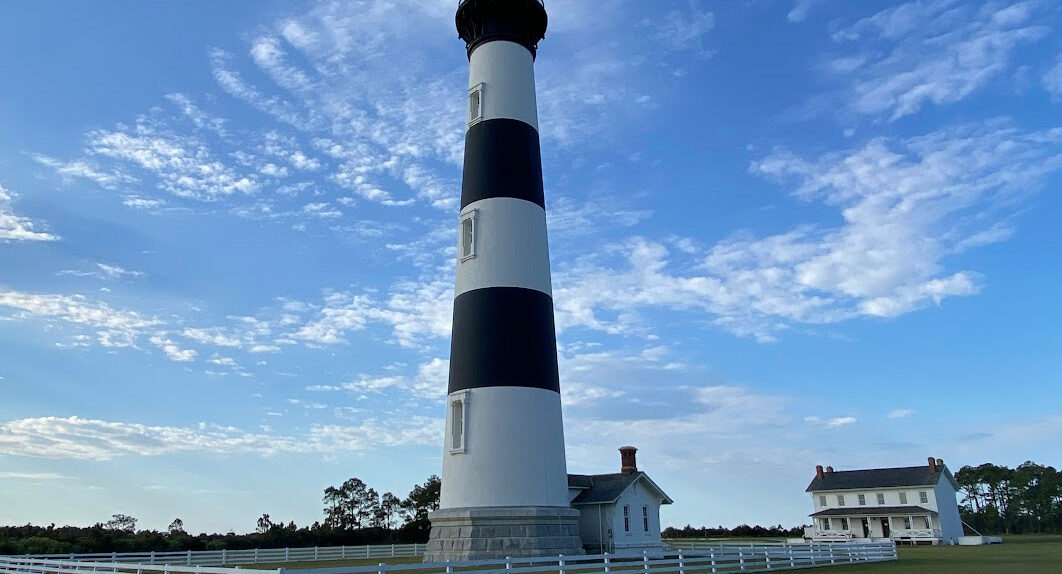
The cemetery in the RV Park still gets me!
Love this so much!